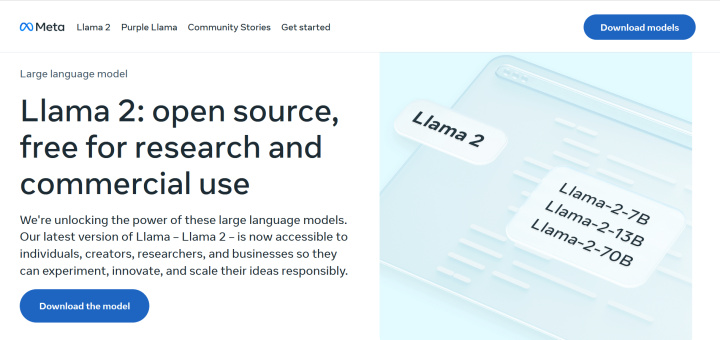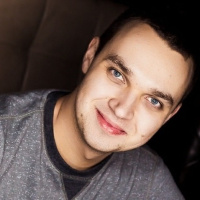Top 5 Open Source LLMs
The emergence of open source LLMs is one of the key stages in the development of modern AI. They have given a powerful impetus to the creation of free tools like Code Llama, as well as many other equally useful solutions. Our article will introduce you to the features and capabilities of this advanced technology, as well as the top 5 open source LLMs. The review we have prepared will help you keep up with the latest trends and choose the best option for yourself.
What is a Large Language Model
Large Language Models (LLMs) are one type of artificial intelligence model built using machine learning (ML) and deep learning (DL) technologies. They learn from vast amounts of text data, such as books, articles, and websites. A well-trained LLM is capable of performing various operations on text, including understanding, analyzing, and translating between different languages. Additionally, they can generate texts of different styles, topics, and lengths based on user requests.
All large language models can be categorized into two types: proprietary and open source models. Proprietary models are owned by private companies and protected by licenses. An example of a proprietary model is the GPT neural network from OpenAI, which powers the popular chatbot ChatGPT. On the other hand, open source models are freely available to the public and can be used, modified, and adapted by anyone without any restrictions.
Benefits of an Open Source LLM
Open source LLM models have a number of important advantages. These include:
- Savings. The absence of licensing fees makes this software beneficial for small businesses and startups with limited budgets, as well as individuals.
- Customization. Open source code makes it possible to flexibly customize and adapt the model to the specifics and requirements of a particular industry, company, or project.
- Transparency. Openness makes LLMs more understandable, reliable, and secure. Anyone can examine the source code of the model to evaluate its real parameters and functions.
- Confidentiality. The ability to deploy the model on internal infrastructure gives users maximum control over their data.
- Independence. Open source LLMs help businesses eliminate vendor dependency on the software and make its use more flexible.
- Innovation. The ability to freely change and refine such language models promotes innovation. Companies, startups, and individuals can not only improve them but also use them as a basis when developing new applications.
Open models have proven themselves in performing various tasks. They are actively used in the process of creating smart chatbots, content generation, text translations, research, sentiment analysis, and so on.
Llama 2
The Llama 2 neural network, presented by Meta in the summer of 2023, confidently holds its position as one of the best open source LLMs. Today, it is one of the few completely free open language models created by a large corporation. Most neural networks of this level (OpenAI GPT, Anthropic Claude, Google PaLM) are proprietary. A number of other Meta products have been developed based on Llama 2. The most famous among them are the AI model for generating program code, Code Llama, and the chatbot, Llama Chat.

Key features:
- The system checks, supplements, and generates code from scratch, creates explanations for it, and performs debugging. In addition to code, it efficiently generates and processes text, understands queries in both code and natural language format.
- The AI model supports most popular programming languages, including Python, C++, Java, PHP, TypeScript (JavaScript), C#, and Bash.
- Llama 2 was trained using billions of web pages, Wikipedia articles, Project Gutenberg books, and millions of user queries.
- LLM has three varieties: with 7 billion (7B), 13 billion (13B), and 70 billion (70B) parameters.
- The open-source code and low resource requirements of this large language model make it accessible to startups, non-profit organizations, scientific communities, and individual users.
- Meta developed this AI model using Research Super Cluster and several internal clusters with NVIDIA A100 GPUs. Its training period ranged from 184K GPU-hours for the 7B model to 1.7M GPU-hours for the 70B model.
- Llama 2 (70B variant) outperforms many open-source LLMs. Its test results indicate that it meets GPT-3.5 and PaLM for most criteria. At the same time, it lags behind GPT-4 and PaLM 2.
- The software is freely available and can be used for private, commercial, or research purposes. Everyone has the opportunity to download this AI model from the official website of the project (the minimum size version 7B weighs approximately 13 GB). After that, you can run it on your computer and study the technical documentation.
BLOOM
BigScience Large Open-science Open-access Multilingual Language Model (BLOOM) is a well-known open source LLM, released in the summer of 2022. A large team worked on this project with more than 1,200 participants from 39 countries. Like other similar AI models, BLOOM has a “transformer” architecture and contains 176 billion parameters. During training, it processed 1.5 terabytes of text and 350 billion unique tokens.
The development of this neural network was coordinated by BigScience in collaboration with Hugging Face and the French National Center for Scientific Research. Its training was carried out on a supercomputer powered by nuclear energy.
Key features:
- The training material for the language model was the ROOTS dataset, with an extensive data set from 100+ sources in 59 languages: 46 spoken and 13 programming languages.
- BLOOM is a scalable model. It supports publicly available tools and databases.
- The neural network is publicly available on the Hugging Face website. Users can select the languages they are interested in and then submit requests to complete certain tasks.
- The model is effective in writing texts of varying length and content, translating and summarizing existing texts, generating program code and other NLP processes.
- The large language model open source BLOOM has more parameters than GPT-3 from OpenAI (176B versus 175B). According to its creators, this is the first full-scale AI model for working with text in Spanish and Arabic.
- The software easily automates programming tasks, including code generation and debugging. Hence, it is a useful tool for both beginners and experienced developers.
- BLOOM has gained recognition in the scientific community for its extensive capabilities for linguistic analysis and AI research.
GPT-NeoX
LLM open source GPT-NeoX is an equally worthy participant in our selection. The EleutherAI research group released it in early 2022. It is noteworthy that the developers interacted with each other only through Discord and GitHub. However, this did not stop them from presenting to the audience a fully-fledged free and open source alternative to GPT-3.
Key features:
- GPT-NeoX-20B with 20 billion parameters is trained on CoreWeave GPUs using The Pile. It is based on the “transformer” architecture.
- According to the results of tests conducted by EleutherAI, this LLM outperformed the Curie version of the GPT-3 model by several percentage points. It was also inferior to the GPT-3 DaVinci version, which has about 150 billion parameters, by several percentage points.
- GPT-NeoX is one of the largest open source LLMs. It was trained on a dataset of 850 GB of publicly available texts.
- The AI model effectively performs many NLP tasks, including text generation, analysis, summarization, editing, and translation. In addition, it is capable of creating, supplementing, and commenting on program code.
- GPT-NeoX is an experimental technology. The developers do not recommend deploying it in a production environment without first testing it. To run the model, at least 42 GB of VRAM and 40 GB of disk space are required.
- The model is built on Megatron and DeepSpeed and implemented in PyTorch. During training, the team used data parallelism.
- 12 Supermicro AS-4124GO-NART servers participated in the software development process. Each was equipped with 8 NVIDIA A100-SXM4-40GB GPUs and 2 AMD EPYC 7532 processors.
Falcon
Falcon is a relatively new member of the LLM models open source. Its first version was released in June 2023. Today, 4 varieties of this model are available to users: Falcon 180B, 40B, 7.5B, and 1.3B. They differ in size and power, ranging from 1.3 to 180 billion parameters, respectively.

Key features:
- The language model was developed by the Technology Innovation Institute (TII), which is part of the Abu Dhabi Government's Advanced Technology Research Council.
- Falcon was trained on the AWS cloud for two months, utilizing up to 4,096 GPUs simultaneously. The total training time amounted to 7M GPU hours.
- The 180B version was released in September 2023. It is currently the largest open source LLM available. The training data consisted of a set of 3.5 trillion tokens from the RefinedWeb dataset provided by TII.
- The neural network is available for both commercial and research purposes. In terms of performance, it ranks at the top among open LLMs and is considered one of the best open source large language models.
- Users can access the model on the Hugging Face Hub, which includes both the basic version and the chat version. Its capabilities can be tested in the Falcon Chat Demo Space.
- The Falcon 180B is 2.5 times larger than Meta's Llama 2. It required four times more resources for training. Additionally, it surpasses OpenAI's GPT-3.5 in terms of power and is comparable to Google PaLM 2.
- The neural network effectively handles various tasks related to text generation and processing, as well as program code. This has been confirmed through numerous tests.
BERT
Our selection ends with BERT, the first and most significant modern open source large language model. It was released in 2018 by a team of researchers from Google and soon became the basis for a number of subsequent projects to develop NLP technologies. Like other similar LLMs, it has a “transformer” architecture. Its abbreviation stands for Bidirectional Encoder Representations from Transformers.
Key features:
- Initially, the model had two versions – with 110 and 340 million parameters. Both only supported English. They were trained on the Toronto BookCorpus dataset (800 million words) and the English-language Wikipedia (2,500 million words).
- BERT was the first LLM with the then experimental “transformer” neural architecture, created by the Google team in 2017.
- The AI model successfully handles many NLP tasks. It can generate and summarize text, translate to different languages, answer questions, analyze sentiment, etc.
- In 2020, Google integrated BERT into the Google Search module in 70+ languages. By using a neural network to rank content and display snippets, the search engine takes into account the context of user queries and produces more relevant results.
- The language model has many variations created based on it. The most famous among them are RoBERTa, DistilBERT, and ALBERT.
Conclusion
We hope we were able to clearly explain what is an open-source large language model and discuss the features of the most famous neural networks of this type. The emergence of free and open-source LLMs was truly a landmark event in the history of modern AI. Thanks to them, anyone can use neural networks for any purpose without any costs or restrictions. Moreover, open-source code makes it possible to continuously improve them, as well as develop new AI projects based on them.
Apix-Drive will help optimize business processes, save you from a lot of routine tasks and unnecessary costs for automation, attracting additional specialists. Try setting up a free test connection with ApiX-Drive and see for yourself. Now you have to think about where to invest the freed time and money!

